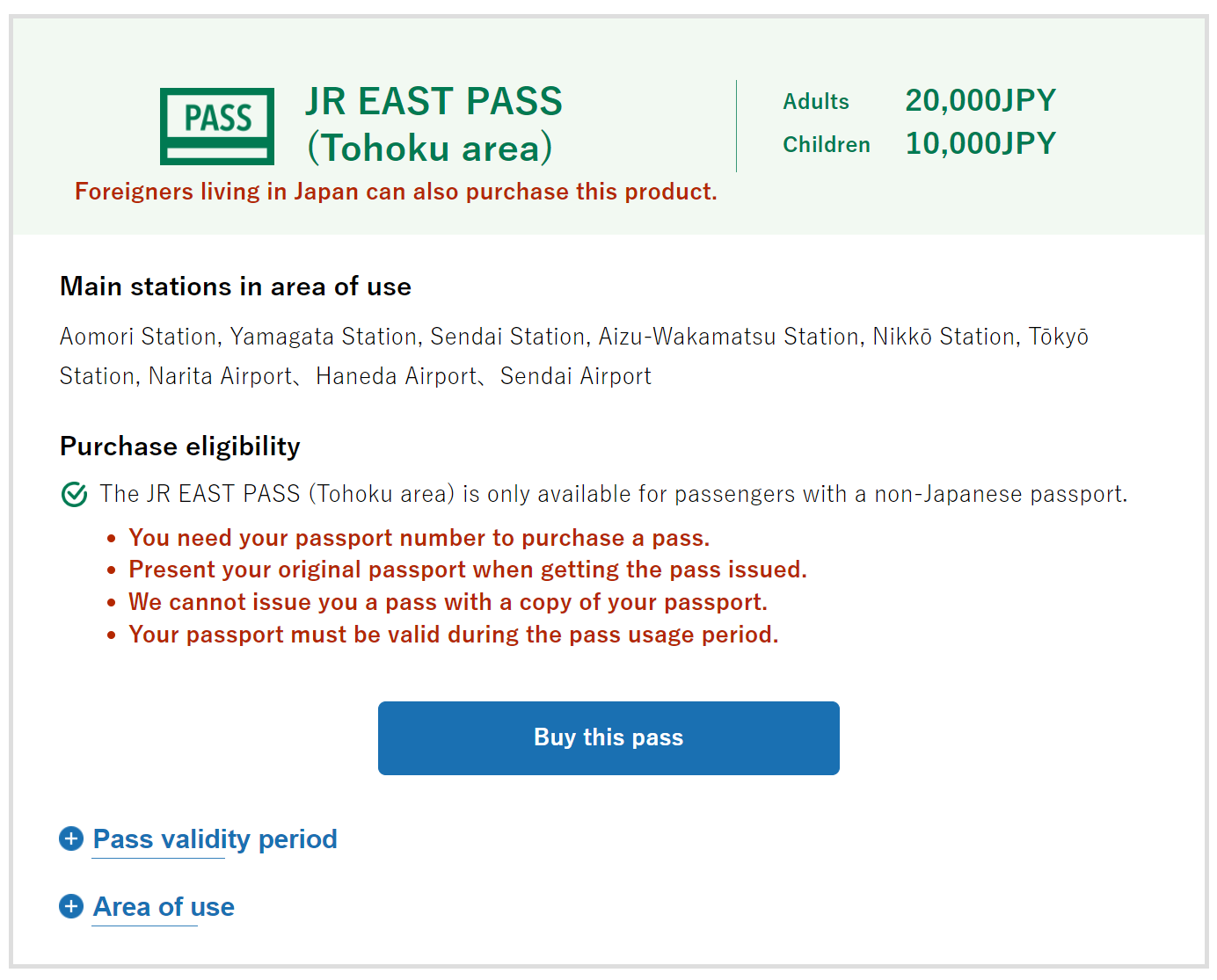

登錄


登錄
海擇短評 Haize Comment:
近期日本JR集團開始宣傳季節性的通票,比如“秋季無限通票(秋の乗り放題パス)”,範圍涵蓋了JR線的普通列車、快速列車、快速巴士系統(BRT)以及JR西日本宮島渡輪的車票;在北海道也發售了“秋季無限次通行證北海道新幹線優惠車票(秋の乗り放題パス北海道新幹線オプション券)”。海擇資本當然不談這類產品,不過,相信很多人也發現了,即便是超音速客機在研發的現代,無論是基於碳排放、ESG(Environmental, Social, and Governance)之類的環境永續考慮,或是考慮到體驗鐵道沿途地貌風景的特殊感受,鐵路交通仍不會退出旅客的選擇。
在當前的互聯網時代,鐵路交通的用戶體驗被證明仍有很多優化的空間。舉例來說,過往我們所謂的買不到車票,傳統意義上,指的是買不到A地到B地"座位不變"的車票,而在A地到B地已經沒有"座位不變"的車票時,旅客會願意接受"座位變動"的車票,只是多數鐵路公司不提供這樣的技術或產品,從而少了將收益最大化的機會,而這可以被歸納到技術能做的收益管理。目前中國OTA的搶票,已經可以做到若A地到B地"座位不變"的票已經售罄,OTA可以協助客戶分段購票,比如從上海到杭州無票,OTA可以做到分別購買上海到嘉善、嘉善到海寧、海寧到杭州三個不同區間的票,對鐵路公司收益可以最大化,用戶體驗也能變好。以台灣來說,常去花東旅行的人會發現,花蓮跟台東的票常常售罄,但是手動拆段買就能有位置,這樣的服務如果能台鐵(Taiwan Railways Administration MOTC, 台灣鐵路管理局)或OTA也能提供,一定能滿足多方的需求。目前中國的鐵路售票也做到了無紙化,從OTA購票可以直接看到座位,通關憑身分證件,這自然是鐵路公司(在中國是中國國家鐵路集團, China Railway)提供外接的API,這對旅客來說可以大幅減少提前到車站的時間,對用戶體驗也有很大的優化。
談了兩岸的鐵路交通,再來看日本。日本城際交通的主要工具是JR、近鐵及私鐵,雖然都是民營化公司,但是互聯網化的深度還很有加強空間;以上述的通票來說,如果能做無紙化,會更有利於大包小包行李的旅客。目前日本的城內交通已經可以直接刷Suica、PASMO或ICOCA做為交通和購物的支付工具,互聯網化的進程已快速開展。未來城際交通的互聯網化如果從JR跟近鐵開始覆蓋,這也會是相關業者的潛在商機與獲取流量的好機會。
----------
Recently, Japan's JR Group has started promoting seasonal passes, such as the "Autumn Unlimited Pass (秋の乗り放題パス)", which covers regular JR trains, express trains, the Bus Rapid Transit (BRT) system, as well as tickets for the JR West Miyajima ferry. In Hokkaido, they have also introduced the "Autumn Unlimited Hokkaido Shinkansen Option Ticket (秋の乗り放題パス北海道新幹線オプション券)". Many people may realize that, even in an era when supersonic aircraft are being developed, whether it's due to concerns about carbon emissions, ESG (Environmental, Social, and Governance) sustainability, or the unique experience of enjoying the landscapes along the railway routes, rail travel still enjoys a strong patronage from travelers.
In the current Internet era, it's evident that the user experience of rail transportation still has much room for improvement. For instance, when train ticket was sold out, it usually meant there is no ticket with a "fixed seat" from Point A to Point B, but passengers might be willing to accept tickets with "unfixed seats." Unfortunately, most railway companies do not offer such a technology or product, missing out on an opportunity for maximizing their revenue.
However, Online Travel Agencies (OTA) in China have tackled this problem. If "fixed seat" tickets from Point A to Point B are sold out, the OTA can assist customers in buying segmented tickets. For example, if there are no tickets from Shanghai to Hangzhou, the OTA can guide the purchase of segmented tickets for Shanghai to Jiashan, Jiashan to Haining, and Haining to Hangzhou. This approach can maximize revenue for railway companies and improve user experience.
In Taiwan's context, tickets to Hualien and Taitung often sell out. However, if you manually break down the journey and purchase tickets for each segment, seats can usually be found. If services like this could be offered by Taiwan Railways Administration (TRA, 台灣鐵路管理局) or OTAs, it would certainly meet the needs of many travelers.
Additionally, China's railway ticketing system has achieved paperless operation. After purchasing a ticket through an OTA, passengers can directly view their seat, and passengers simply verify their ID card for boarding. This is made possible by the external APIs provided by the railway company (China Railway). This process significantly reduces the need for passengers to arrive early at the station and greatly enhances the overall user experience.
As for Japan, Japan's intercity transportation mainly relies on JR (Japan Railways), Kintetsu, and other private railways. While these are private companies, there's still considerable room to deepen digitalization. Taking the above mentioned seasonal passes as an example, transitioning to a paperless system would be especially beneficial for travelers with luggage. Currently, urban transportation in Japan has already integrated contactless payment systems. Commuters and shoppers can directly use Suica, PASMO, or ICOCA as payment tools, showing a rapid digitalization development. If the digitalization of intercity transportation begins with major players like JR and Kintetsu, it will present a promising business opportunity and a chance to attract more users.
----------
최근 일본 JR 그룹은 일반 JR 열차, 특급 열차, 고속 버스 시스템(BRT) 및 JR 서일본 미야시마 페리의 승차권을 포함하는 '가을 무한 패스(秋の乗り放題パス)'와 같은 계절 패스를 출시하기 시작했다. 홋카이도에서는 '가을 무제한 홋카이도 신칸센 할인표(秋の乗り放題パス北海道新幹線オプション券)'를 내놓기도 했다. 많은 사람들이 깨달을 수 있는 점은 초음속 비행기가 발전하고 있는 시대에도 탄소 배출에 대한 우려를 하거나, ESG(Environmental, Social, and Governance)의 지속가능성에 대한 고려를 하거나, 철도 연선의 경관을 감상하기 위한 특별한 체험에서도, 철도 여행이 여전히 관광객들의 강한 사랑을 받고 있다는 것이다.
현재의 인터넷 시대에 궤도 교통의 사용자 체험은 분명히 아직 매우 큰 향상 공간이 있다. 예를 들어, 과거에는 기차표가 매진되었을 때, 일반적으로 A시부터 B시까지 이미 '고정석'의 표가 없다는 것을 의미했지만, 승객들은 '자유석'의 표를 받아들이기를 원할 수도 있다. 그러나 대부분의 철도 회사들은 이러한 기술이나 제품을 제공하지 않아 수익을 극대화할 기회를 놓쳤다. 중국의 온라인 여행사(OTA)는 이미 이 문제를 해결했다. A시부터 B시까지 이어지는 '고정석'의 승차권이 매진되면 온라인 여행사는 고객이 구간별 승차권을 구매할 수 있도록 도울 수 있다. 예를 들어, 상하이에서 항저우로 가는 차표가 없다면, OTA는 사용자가 상하이에서 자선, 자선에서 하이닝, 하이닝에서 항저우로 가는 구간별 차표를 구매하도록 유도할 수 있다. 이 방법은 철도 회사의 수익을 극대화하고 사용자 경험을 개선 할 수 있다. 대만에서는 화롄과 타이둥으로 가는 표가 자주 매진된다. 그러나 수동으로 여정을 분해하고 각 구간의 표를 구매할 수 있다. 만약 대만철도관리국(TRA)이나 온라인여행사들이 이런 서비스를 제공한다면 틀림없이 더욱 많은 여객들의 수요를 만족시킬 것이다. 이밖에 중국철도표무시스템은 이미 무종이화운행을 실현했다. OTA를 통해 승차권을 구매하면 승객이 직접 좌석을 확인할 수 있고, 승객은 신분증 검증만으로 승차할 수 있다. 이는 철도회사(China Railway)가 제공한 외부 API에 의해 이뤄졌다. 이는 승객들이 역에 미리 도착하는 시간을 크게 줄이고 전반적인 사용자 경험을 크게 향상시켰다.
일본에 대해 말하자면, 일본의 도시 간 교통은 주로 JR(Japan Railways), 근거리 철도(Kintetsu) 등 민영 철도에 의존한다. 비록 이것들은 모두 민영 회사이지만, 여전히 디지털화를 심화시킬 수 있는 상당한 공간이 있다. 위에서 언급한 계절성 패스를 예로 들면, 종이 없는 시스템으로 이행하는 것은 짐을 휴대하는 여행객에게 특히 유익하다. 현재 일본의 도시 교통은 비접촉 결제 시스템을 통합하여 Suica, PASMO 또는 ICOCA를 결제 수단으로 직접 사용할 수 있으며 빠른 디지털 발전을 보여주고 있다. 도시 간 교통의 디지털화가 JR과 근거리 철도와 같은 대기업에서 시작된다면, 그것은 더 많은 사용자를 끌어들일 수있는 유망한 비즈니스 기회를 제공할 것이다.

文章鏈接 Hyperlink:https://www.travelvoice.jp/20230912-154164
資料來源 Resource:Travelvoice
標籤 Label: Railway China Japan Ticketing